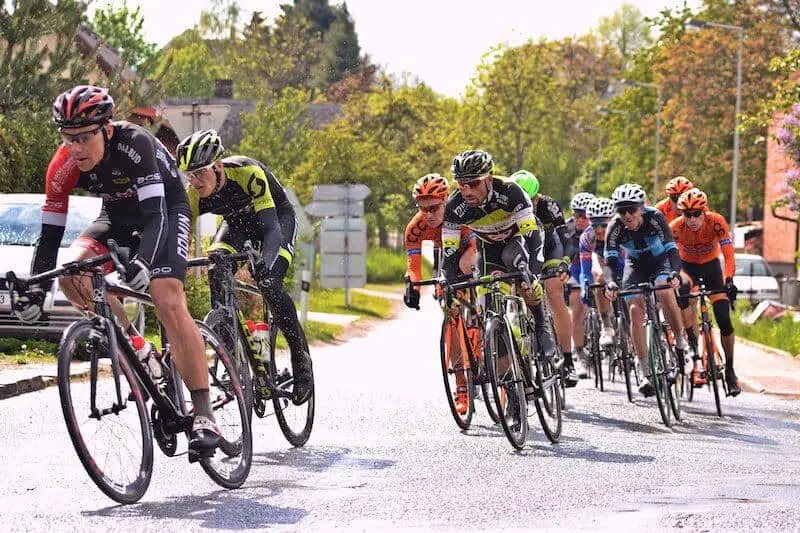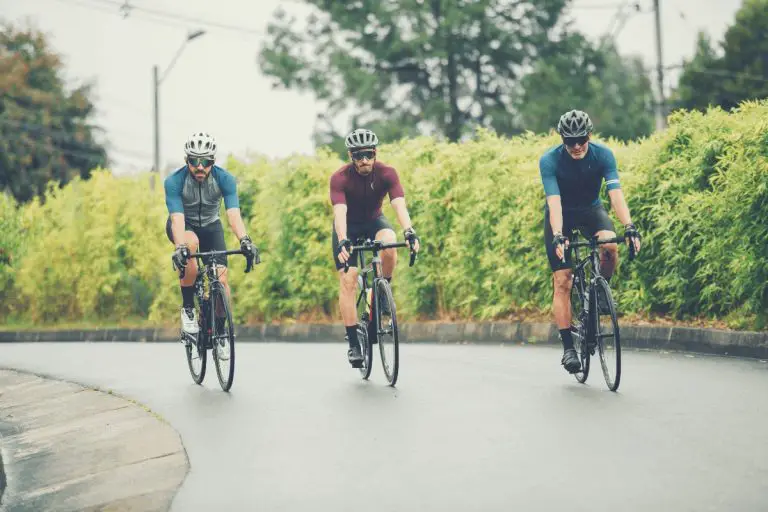You Never Forget Your First
So you’ve signed up for your first Gran Fondo. Congrats! Like most, after the initial excitement wanes, the magnitude of the training and the ride can make you wonder, “What have I gotten myself into?” Relax. I’m going to help you train and be prepared for this important milestone: your first Gran Fondo.
What Is A Gran Fondo?
For those who have yet to sign up… what is a Gran Fondo? The Italians are given credit for creating the Gran Fondo (“big ride”) and held the first, Nove Colli (“nine hills”), in 1970. Not to be confused with Gram’s Fondu, which is Grammy’s sickly, cheese appetizer she serves at Christmas! An event must have the following to be categorized as a Gran Fondo:
- Minimum of 120km (75 miles)
- Chip timed start/finish
- Prizes for winners in each category
- Beer (okay, I added that, but there’s usually something alcoholic to toast the day!)
Gran Fondos attract pro riders and recreational cyclists. It’s a mesh between a tour and a race with some partying. Some Gran Fondos have only a few hundred participants, while the Nove Colli has anywhere from 10,000 to 12,000 cyclists on a closed course. There is SAG (support and gear) support, food/water stations, and a post-ride party.
In 2009, Gran Fondos was introduced to the U.S., and by 2017, there were hundreds of Gran Fondos in America. U.S. Gran Fondos are not a “True Italian” version because the roads aren’t closed to traffic like they are in Italy, but we love to celebrate the victory in true Italian fashion.
Here’s some event etiquette tips for your first Gran Fondo!
A Beginner’s Gran Fondo Training Program – 2 Months + 1 Week
This training plan is based on the following:
- You have logged at least 14 weeks of endurance training and have established base fitness
- You can commit to 4 days a week to training
- Your event is 75-100 miles (120-161 KM) and isn’t a flat course
- You understand RPE (rating of perceived effort) with 1 being “beach crawl” effort and 10 being “any more of this and I’ll die!” FYI: RPE 5 is “your current endurance pace.”
- You have an indoor trainer and can commit to riding for 2 days outdoors. Not an issue if you want to completely train outdoors though!
Week 1
- Tuesday: Indoors; 1:00 endurance (RPE 5) with 3-5 minute intervals (RPE 6-7)
- Wednesday: Indoors; 1:30 endurance (RPE 4)
- Saturday: Outdoors; 3-4 hours endurance (RPE 4)
- Sunday: Outdoors; 1-2 hours endurance (RPE 4) with climbing or speed work
Week 2
- Tuesday: Indoors; 1:00 endurance (RPE 5) with 5-5 minute intervals (RPE 6-7)
- Wednesday: Indoors; 1:30 endurance (RPE 4)
- Saturday: Outdoors; 3-4 hours endurance (RPE4) with 3-15 minute intervals (RPE 6)
- Sunday: Outdoors; 1-2 hours endurance (RPE 4) with climbing or speed work (RPE 6-7)
Week 3
- Tuesday: Indoors; 1:15 endurance (RPE 5) with 5-5 minute intervals (RPE 6-7)
- Wednesday: Indoors; 1:30 endurance (RPE 4)
- Saturday: Outdoors; 3-4 hours endurance (RPE 4)
- Sunday: Outdoors; 1-2 hours endurance with climbing (RPE 6-7); focus on high cadence climbing and out of the saddle climbing
Week 4
- Tuesday: Indoors; 1:15 endurance (RPE 5) with 5-5 minute intervals (RPE 7)
- Wednesday: Indoors; 1:30 endurance (RPE 5)
- Saturday: Outdoors; 4 hours endurance (RPE5)
- Sunday: Outdoors; 2 hours endurance with (RPE 6-7) climbing or speed work
Week 5
- Tuesday: Indoors; 1:15 endurance (RPE 5) with 7-5 minute intervals (RPE 7)
- Wednesday: Indoors; 1:30 endurance (RPE 5)
- Saturday: Outdoors; 5 hours endurance (RPE5) with 5-1 minute intervals (RPE 9-10)
- Sunday: Outdoors; 2 hours endurance with (RPE 6-7) climbing or speed work
Week 6
- Tuesday: Indoors; 1:15 endurance (RPE 5) with 7-5 minute intervals (RPE 8)
- Wednesday: Indoors; 1:30 endurance (RPE 5)
- Saturday: Outdoors; 5 hours endurance (RPE5) with 4-15 minute intervals (RPE 7)
- Sunday: Outdoors; 2 hours endurance with (RPE 6-7) climbing or speed work
Week 7
- Tuesday: Indoors; 1:15 endurance (RPE 5) with 7-5 minute intervals (RPE 8)
- Wednesday: Indoors; 1:30 endurance (RPE 5)
- Saturday: Outdoors; 4 hours endurance (RPE5) with 5-1 minute intervals (RPE 9-10)
- Sunday: Outdoors; 2-3 hours endurance with (RPE 6-7) climbing or speed work
Week 8
- Tuesday: Indoors; 1:15 endurance (RPE 5) with 7-5 minute intervals (RPE 8)
- Wednesday: Indoors; 1:30 endurance (RPE 5)
- Saturday: Outdoors; 4 hours endurance (RPE5) with 5-1 minute intervals (RPE 9-10)
- Sunday: Outdoors; 2-3 hours endurance with (RPE 6-7) climbing or speed work
Week 9 – Gran Fondo Week!
- Tuesday: Indoors; 1:15 endurance (RPE 4)
- Wednesday: Indoors; 1:00 endurance (RPE 5) with 2-5 minute intervals at (RPE 6)
- Saturday: Gran Fondo

Added Bonus: Coach’s Tips
There’s more than logging miles on your bike to get ready for your Gran Fondo. Here are some things I’ve learned, often the hard way, over the years.
Related article – The Benefits Of Having A Cycling Coach
Know The Route, Train for the Route
I’m not implying you memorize every turn, but you should be well-acquainted with where the hills are and what mile marker the rest (food/drink) stops are. With that information, I like to plan my training rides based on this information.
In 2020, before COVID, I trained two groups preparing to ride 100-miles in Death Valley, California, and Amelia Island, Florida. The Death Valley team trained on rolling terrain with one big climb (8-10% gradient; 1-2 miles long) near the end to imitate the 5-mile climb (6% gradient) at mile 50 in Death Valley. For the Amelia Team, we avoided climbing since the 100-mile Florida route had a total of 800 feet of climbing.
Don’t assume flat is easier. Sure, you won’t be climbing, but a flat Gran Fondo will have these challenges:
- Wind – Personally, I’d prefer climbing hills to ride for hours in a headwind or crosswind. Over time, the wind will wear you down.
- Constant pedaling – Unlike a hilly course where you can coast downhill, flats have you spinning nonstop. If you’re not used to doing that for long periods, you may have severe fatigue or cramping issues as the miles rack up.
- Monotony – Flat courses can be boring from a riding perspective: you won’t be shifting gears that often, your cadence won’t change much, and your body can get stiff from being in one position most of the day.

Indoor Bike Trainers
I know, I know, I know, riding indoors is about as much fun as seeing a proctologist! But even a budget indoor trainer can significantly improve your fitness, especially during winter months when it’s too cold or dark to ride outside.
If you’re “time-crunched” like me, a good workout on your trainer can be the ticket. Although nothing duplicates riding outdoors, a 60-minute indoor workout is comparable to riding outdoors for 90-100-minutes.
With apps like Zwift and TrainerRoad (my favorite), you can ride with others and create your own training program. I also use my trainer to dial in my cadence and work on my less dominant leg (my left.)
Nutrition And Rest
When it comes to diet, I’m not a stickler, like some who swear off red meat or go vegan. I know athletes who fall into these categories and based upon their athletic performance, their diet must work. Unless you’re a junk-food addict or you eat nothing but fried foods, I suggest maintaining your current diet with the caveat to “listen to your body.” An alternative would be to base your cycling nutrition on IIFYM.
When you begin to log the miles and burn the calories, your body will “tell you” what it needs (as in cravings, carbs, protein, water, etc.) However, if your body tells you that you’re always craving a beer, then you probably need to silence that voice!
The one training aspect I overlooked when I was a young cyclist was rest. I was of the mindset that “more is better,” so I crammed a ride in whenever and wherever I could. I not only got burned out, but I peaked in my performance (in this case, speed.) Incorporating a rest day is crucial for muscles to rebuild and will give you a fresh mindset to tackle your upcoming training regimen.
Race Day!
There’s NOTHING like race day or tour day or Gran Fondo day! It’s the culmination of hours of hard work, dedication, perseverance, and confidence-building. Let me draw upon my 30-plus years of riding to share what NOT to do.
- Don’t Miss It.
It’s easy to get overwhelmed on race day. The PA pumping jams and the pros and the media can be intimidating, and you may miss the moment. So breathe! Have fun. Snap a selfie or two.
- Don’t Eat Something New.
Do not, I repeat, do not try a pre-race drink or food that you’ve never had before. Race day is not the time to “roll the dice” and “go for it!” per food and sports drinks. Several years ago, on a challenging tour with a 5-mile climb, I had a pre-race protein shake a friend gave me. I knew better than to do this but wanted to make sure I had enough in the tank to climb. BIG MISTAKE! By mile 40, my gut was cramping, and I was feeling nasty, which is not what you want on a long ride.
- Don’t Start Too Fast or Too Slow.
When those pros roll and your adrenaline pumps, don’t hang on for too long, especially if it’s way above your pace! Focus on riding your pacing and speed. On my first double-century (105-miles Saturday; 105 miles Sunday), I was young and dumb. When a paceline whizzed by early on day one, I couldn’t resist the temptation, so I jumped on. Boy, was it fun! Boy, was it fast! Boy, did I pay for it the next day!
But don’t go too slow, either. I’ve found that the more experienced riders are near the front while the less experienced riders are in the rear. Typically, seasoned riders have better bike handling skills, which means they are safer to bike in a large group. Conversely, those with less experience can be like “squirrels” darting this way and that on the tarmac, leading to crashes. You didn’t train this hard to get road rash at mile 2!

Rock & Roll!
Besides getting you ready physically to ride your first Gran Fondo, I hope I’ve helped you gain the confidence to tackle this ride with gusto, grit, and glorious fashion. Most importantly, have fun, be safe, drink it in, and I’ll lift a pint when you cross the finish line!
You may also like to read:

